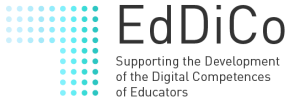Activity Theory as Design tool for Educational Projects and Digital Artifacts – LO
A flexible, modular framework able to effectively represent the many and complex relationships and processes involved in an educational digital project, can be the “Cultural Historical Activity Theory” (CHAT) (Engeström, 1987). The theory focuses on activity systems seen as interactions and changes in learners, social communities, objects, and tools. Technologies in our context are seen as mediators tools of the activities of individuals acting in a coordinated way in order to achieve a specific goal (Kaptelinin & Nardi, 2006). According to this interpretation, we can describe the activities of a complex socio-technical system, such as the planning of educational digital projects, analysing the interrelationships of six elements that contribute to the realization of an expected outcome:
• subject(s) – actors engaged in the activities;
• object – the objective of the activity system;
• community – social context;
• tools – the technological artifacts (instruments) used by actors in the system;
• division of labour – the division of activities among actors in the system;
• rules-conventions, guidelines and rules regulating activities in the system

